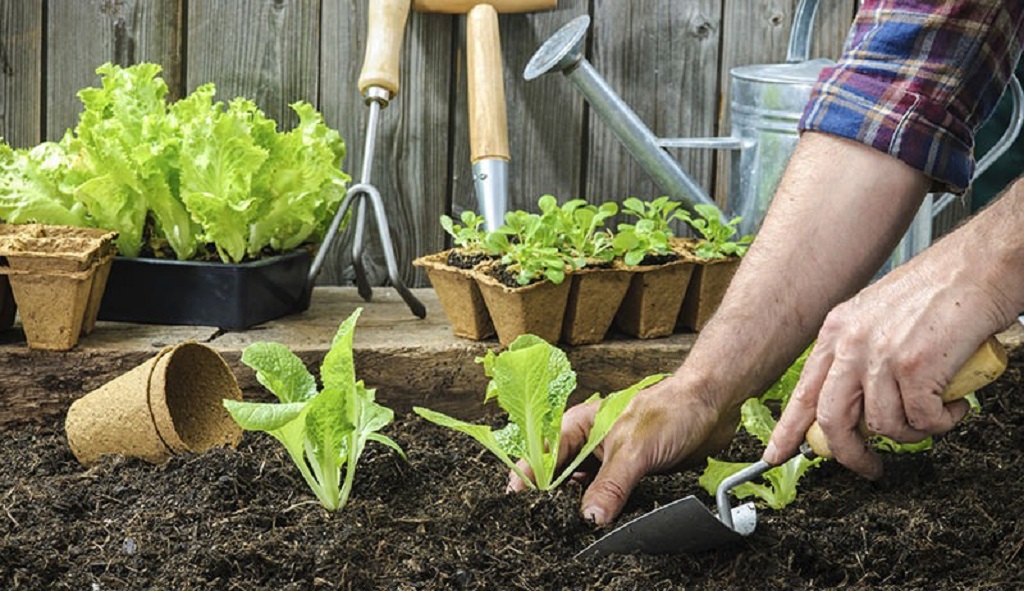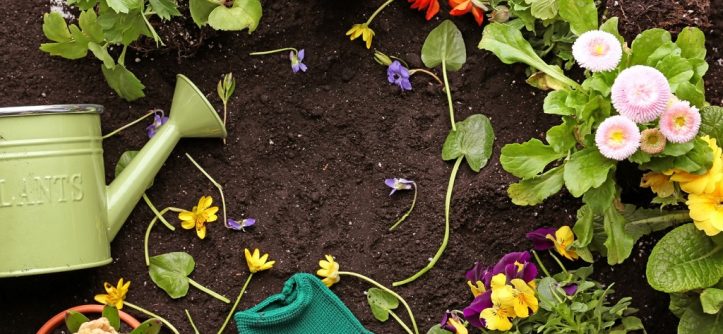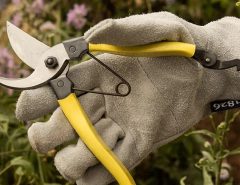Imagine a garden that thrives while saving the planet—one trowel at a time. Canadians are embracing eco-conscious gardening, driven by a desire to reduce environmental impact and cultivate sustainable landscapes. Sustainable gardening tools are revolutionizing how we nurture our green spaces, blending innovation with environmental stewardship. This article explores the latest advancements in sustainable gardening tools, their benefits, and their role in shaping Canada’s eco-friendly future. From solar-powered mowers to biodegradable pots, these tools offer practical solutions for greener gardens.
The Rise of Eco-Conscious Gardening in Canada
Canadians love their gardens, with over 60% of households engaging in gardening activities, according to Statistics Canada. However, traditional gardening often relies on resource-heavy tools and practices. Gas-powered mowers emit 5% of total air pollution in urban areas, contributing to greenhouse gas emissions. Eco-conscious gardening counters this by prioritizing tools made from recycled materials, renewable energy, or biodegradable components. This shift reflects growing environmental awareness, as 88% of Canadians believe sustainable practices are crucial, per a 2023 Environics survey. Sustainable gardening tools reduce waste, conserve resources, and align with Canada’s commitment to net-zero emissions by 2050.

Why Sustainable Gardening Tools Matter
Sustainable gardening tools minimize environmental harm while enhancing efficiency. For instance, tools made from recycled ocean-bound plastics prevent landfill waste, with companies like Ecogardener diverting over 500 tons of plastic annually. These tools also lower long-term costs. A solar-powered lawnmower, though initially pricier, saves $200 yearly on fuel and maintenance compared to gas models. Critics argue that higher upfront costs deter adoption, but the durability and savings of eco-friendly tools outweigh initial expenses. Additionally, these tools support biodiversity by reducing chemical use, fostering healthier ecosystems for pollinators like bees, which have declined by 30% in Canada over the past decade.
Innovative Tools Transforming Canadian Gardens
The market for sustainable gardening tools is booming, with innovations tailored to Canada’s diverse climates. Here are some game-changers:
- Solar-Powered Lawn Mowers: These mowers harness solar energy, cutting emissions by 90% compared to gas models. Brands like Husqvarna offer models that operate for three hours on a single charge, ideal for small to medium Canadian yards.
- Biodegradable Pots: Made from bamboo, coconut fibers, or manure, these pots decompose naturally, reducing plastic waste. They save 80% of water compared to traditional pots by eliminating washing needs.
- Smart Irrigation Systems: AI-powered controllers adjust watering based on weather data, reducing water use by up to 50%, per Bluestem Gardening. This is critical in drought-prone regions like British Columbia.
- Recycled Kneeling Pads: Crafted from durable, recycled materials, these pads withstand harsh Canadian winters and reduce landfill waste.
These tools blend technology and sustainability, making gardening accessible and eco-friendly. However, some gardeners worry about the reliability of solar tools in Canada’s cloudy regions. Advances in battery storage are addressing this, ensuring consistent performance.
Benefits Beyond the Garden
Sustainable gardening tools offer benefits beyond aesthetics. They reduce carbon footprints, with electric tools producing 70% fewer emissions than gas-powered ones, according to Environment Canada. They also promote soil health by encouraging organic practices like composting, which recycles 30% of household waste into nutrient-rich fertilizer. Socially, gardening fosters community, with 40% of Canadians participating in community gardens, per a 2024 University of Guelph study. These spaces encourage sharing eco-friendly tools, cutting costs and waste. Critics note that sustainable tools may require more maintenance, but their longevity and environmental impact justify the effort.
Challenges and Solutions in Adoption
Despite their benefits, sustainable gardening tools face adoption hurdles. High costs remain a barrier; a solar mower costs $500 more than a gas model. However, government rebates, like Ontario’s Green Living Incentive, offset up to 20% of eco-tool purchases. Another challenge is consumer apathy, with only 25% of eco-conscious gardeners consistently buying sustainable products, per a 2022 Diversitech survey. Education campaigns can bridge this gap, highlighting long-term savings and environmental benefits. Retailers can also offer affordable options, as brands like Ecogardener do, making sustainability accessible to budget-conscious Canadians.
The Role of Technology in Sustainable Gardening
Technology is reshaping eco-conscious gardening. Smart irrigation systems, like those from Rain Bird, use sensors to optimize water use, saving 1,000 gallons annually per household. Solar-powered composters accelerate waste breakdown, reducing methane emissions by 25% compared to traditional composting. Vertical gardening systems, popular in urban Toronto and Vancouver, maximize space and support biodiversity. Some argue that technology complicates gardening, but user-friendly designs ensure accessibility for beginners. These innovations align with Canada’s tech-forward culture, where 70% of households use smart devices, per a 2025 Statista report.
Supporting Local Ecosystems
Sustainable gardening tools enhance local ecosystems. Native plants, supported by tools like biodegradable pots, require 50% less water and attract pollinators, per the University of Maryland Extension. Tools like bamboo trellises, which regrow quickly, reduce deforestation compared to metal or plastic alternatives. However, critics highlight that importing sustainable materials can increase carbon footprints. Sourcing locally, as Ozbreed recommends, cuts emissions by 15% and supports Canadian businesses. By choosing tools that align with local conditions, gardeners create resilient, biodiverse landscapes.
The Economic and Social Impact
Eco-conscious gardening boosts Canada’s economy and communities. The gardening industry contributes $6 billion annually, with sustainable tools driving 20% of growth, per Euromonitor. Community gardens, supported by shared tools, foster social bonds, reducing loneliness by 15%, according to a 2024 McGill study. However, rural gardeners face limited access to sustainable tools due to distribution challenges. Online platforms like ECOgardener address this by offering nationwide shipping. By investing in sustainable tools, Canadians save money and strengthen community ties, making gardening a win-win for people and the planet.
Looking Ahead: The Future of Gardening in Canada
The future of eco-conscious gardening in Canada is bright. By 2030, sustainable gardening tools are projected to dominate 60% of the market, per Gardeninguru. Innovations like AI-driven pest management and vertical farming will make gardening more efficient. Gen Z’s preference for sustainable brands, with 65% willing to pay more, per a 2025 HGTV report, will drive demand. Challenges like climate variability require adaptive tools, but Canada’s commitment to sustainability ensures progress. Gardeners can start small, adopting one eco-friendly tool at a time, to contribute to a greener future.
Featured Snippet: What Are the Best Sustainable Gardening Tools for Canadians?
For eco-conscious gardening in Canada, top sustainable gardening tools include solar-powered lawn mowers, biodegradable pots, smart irrigation systems, and recycled kneeling pads. Solar mowers, like Husqvarna’s, cut emissions by 90% and suit small yards. Biodegradable pots, made from bamboo or coconut, decompose naturally, saving water. Smart irrigation, such as Rain Bird’s, reduces water use by 50% with weather-based adjustments. Recycled kneeling pads offer durability in harsh climates. These tools support biodiversity, reduce waste, and align with Canada’s net-zero goals, making them ideal for sustainable gardeners.
Related Topic: Make Smooth Allulose Syrup at Home
FAQs About Sustainable Gardening Tools
What makes a gardening tool sustainable?
Sustainable tools use recycled, biodegradable, or renewable materials and minimize energy use, reducing environmental impact.
Are sustainable gardening tools expensive?
They often cost more upfront, but rebates and long-term savings on fuel and maintenance make them cost-effective.
Can sustainable tools work in Canada’s climate?
Yes, innovations like improved battery storage ensure reliability in cloudy or cold conditions.
How do sustainable tools help the environment?
They reduce emissions, conserve water, and support biodiversity by minimizing chemical use and waste.
Where can I buy sustainable gardening tools in Canada?
Retailers like ECOgardener and Bluestem Gardening offer eco-friendly tools with nationwide shipping.
Do sustainable tools require more maintenance?
Some do, but durable designs and user-friendly technology keep maintenance minimal.
How can beginners start with sustainable gardening tools?
Start with affordable options like biodegradable pots or rain barrels and gradually adopt more tools.
Final Thought
Sustainable gardening tools empower Canadians to cultivate thriving gardens while protecting the planet. From reducing emissions to fostering biodiversity, these tools are more than gadgets—they’re a commitment to a greener future. Every small step counts, whether it’s composting or switching to a solar mower.
Call to Action: Ready to make your garden eco-friendly? Start with one sustainable gardening tool today. Share your journey with #EcoGardenCanada and inspire others to grow green!
References:
- University of Maryland Extension: Sustainable Gardening
- Rain Bird: Eco-Friendly Gardening
- Top-performing articles: Gardeninguru.com, Bluestem.ca
Featured Images





Leave a Reply